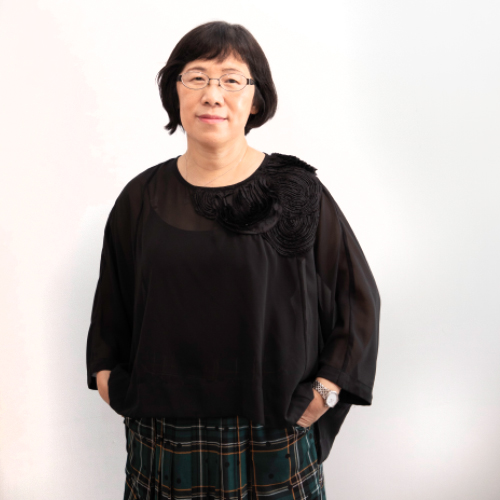Featured Scientist

Zhao-Hua Ho, Ph.D.
College of Fashion and Textiles
Professor
Department of Textiles and Clothing
Research on the establishment of basic standards for the analysis and identification of Taiwanese aboriginal textile and clothing cultural relics collection and preservation
This project expects to use: 1. Document collation; 2. Field investigation; 3. Analysis of the physical identification data of the Chinese Clothing Culture Center; 4. Comprehensive analysis methods to establish the basis for cross-analysis and comparison, so as to gradually establish the category of Taiwanese aboriginal fabrics and clothing The database and standard process for the analysis and identification of cultural relics. The secondary goal is to scientifically analyze the textile cultural relics of the Rukai, Paiwan and Atayal ethnic groups and to combine the two aspects of the national textile classification system, trying to establish a textile and clothing cultural relic of Taiwan's aboriginal people. The preliminary process of analytical identification in museums and the establishment of emic knowledge systems within the context of native cultures.
Rukai and Paiwan are both hierarchical social organizations, while Atayal is a comparatively equal society. Through the analysis of textile cultural relics in the two different types of societies, it is possible to establish a A collection and research model that can continue to be expanded and modified in the future, and finally applicable to the entire Taiwanese aboriginal group. The Rukai and Paiwan peoples have been partly collected in the Chinese Costume Culture Center of Fu Jen Catholic University, while the Atayal part also has collections. The weavers of the tribes have been working with textiles and clothing for a long time in terms of weaving and embroidery techniques. Departments maintain close communication and cooperation. Therefore, the selection of these three ethnic groups has its representative significance in research and the consideration of the feasibility basis for carrying out the project.
Firstly, use the method of document sorting to collect domestic and foreign research cases, monographs and reports related to fabric restoration, testing and fiber material identification, and carry out document sorting work to sort out the workflow of fabric testing in various countries. After converging the literature collection, recruit fabrics Preserve inspection-related expert meetings to establish priorities and hierarchies for fabric restoration. We also collected relevant documents and old photos of Taiwan’s aborigines during the Japanese colonial period and after the Nationalist government moved to Taiwan, and compared the history and field of the evolution and transformation of aboriginal fabrics and clothing in the collections and tribal field investigations, as preliminary data for fiber testing. , looking forward to the opportunity to connect the time sequence of aboriginal costumes and fabrics. In order to take local knowledge and culture as the core and make comparisons with the fabrics collected by the Chinese Clothing Culture Center, this project selects a tribe every year as the core to work together to collect and record the material and cultural materials of the related fabrics and clothing of the aboriginal people, including Historical and cultural context. Collect the process of using fiber, dyeing and weaving by aboriginal tribes in contemporary Taiwan. And record the terminology, engineering formulas and weaving specifications of the aboriginal weaving methods. Finally, using preservation science and technology to actually analyze the objects collected from the field, through scientific analysis and filing, to accumulate a database of fiber characteristics of cultural relics as the basis for subsequent comparisons.
Furthermore, the fabric analysis and testing procedures and operating specifications were established according to the previous research, and non-destructive testing instruments were used. Based on the cultural relics of Taiwanese aboriginal fabrics and costumes collected by the "Chinese Clothing Culture Research Center" of the Department of Textiles and Clothing of Fu Jen Catholic University, through collection analysis , through the fabric observation method, fiber identification method, the construction of cultural relics fiber characteristics, organizational structure, color and related information on the aging and embrittlement of cultural relics, as the basis for the preservation and restoration of cultural relics. At the same time, the relevant information collected by the scientific inspection technology will be established as a database. Finally, after the database data for scientific analysis and testing is established, it is hoped that according to the characteristics of Taiwan’s aboriginal fabric and clothing cultural relics, a classification system of aboriginal fabric obtained from field surveys combined with scientific analysis will be gradually established. Methods and workflows for the preservation, analysis, testing, and identification of cultural relics made of fabrics and costumes of the residents, and the establishment of standards for subsequent collection, preservation, and restoration.
In the long run, the fabrics and clothing of Taiwan's aborigines have a special role in Asia and the South Island. For example, scholars' investigations on language and bark cloth have shown that Taiwan's aborigines have made unique contributions to the history of culture and migration in the South Island. If the establishment of the forensic database can be used as the basis for the study of Taiwan's textile and clothing culture at the same time, and the concept and operation techniques can be promoted through educational training, it will greatly expand the depth and breadth of Taiwan's native textile and clothing cultural relics research. help.
35 views